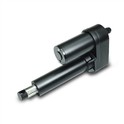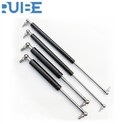As a supplier of Storage Bed Mechanisms, I understand the importance of keeping these mechanisms in top - notch condition. Dust and debris can significantly affect the performance and longevity of a storage bed mechanism. In this blog, I'll share some effective ways to protect a storage bed mechanism from dust and debris.
Understanding the Impact of Dust and Debris
Before delving into the protective measures, it's essential to understand why dust and debris are such a problem for storage bed mechanisms. Dust can act as an abrasive, wearing down the moving parts of the mechanism over time. It can also accumulate in the joints and gears, causing them to jam or operate less smoothly. Debris, such as small particles of dirt, hair, or lint, can get caught in the mechanism, preventing proper movement and potentially causing damage.


For instance, in a Hidden Bed Lift Mechanism, dust can settle on the motor and the lifting arms. This can lead to increased friction, which not only makes the bed harder to lift but also puts extra strain on the motor, reducing its lifespan. Similarly, in a Storage Bed Mechanism, debris can clog the tracks and hinges, making it difficult to open and close the storage compartments.
Regular Cleaning
One of the most straightforward ways to protect a storage bed mechanism from dust and debris is through regular cleaning. Start by vacuuming the area around the bed, including the floor and the sides of the bed frame. Use a soft - brush attachment to gently remove dust from the surface of the mechanism. Pay special attention to the joints, gears, and tracks, as these are the areas where dust and debris are most likely to accumulate.
For a more thorough cleaning, you can use a microfiber cloth dampened with a mild cleaning solution. Wipe down the entire mechanism, being careful not to get any liquid into the electrical components if the mechanism is motorized. After cleaning, dry the mechanism thoroughly to prevent rust and corrosion.
It's recommended to clean the storage bed mechanism at least once a month. However, if you live in a dusty environment or have pets, you may need to clean it more frequently.
Using Covers
Another effective way to protect the storage bed mechanism is by using covers. There are several types of covers available, depending on your needs.
- Dust Covers: These are simple, lightweight covers that can be placed over the bed when it's not in use. Dust covers are usually made of a breathable fabric that allows air to circulate while keeping dust and debris out. They are easy to install and remove, and they can significantly reduce the amount of dust that accumulates on the mechanism.
- Custom - Made Covers: If you want a more precise fit, you can opt for custom - made covers. These covers are designed specifically for your storage bed and can provide better protection. They are often made of a more durable material and may have additional features, such as elastic edges or zippers, to ensure a snug fit.
- Bed Skirts: Bed skirts not only add a decorative touch to your bed but also act as a barrier against dust and debris. They hang down from the edge of the bed frame, preventing dust from getting under the bed and onto the mechanism.
Sealing Gaps and Openings
Inspect the storage bed for any gaps or openings where dust and debris can enter. Common areas include the joints between the bed frame and the storage compartments, the edges of the tracks, and the holes for the electrical wires.
- Sealant: Use a silicone sealant to fill in small gaps and cracks. Silicone sealant is flexible, waterproof, and can withstand temperature changes. It will create a tight seal that prevents dust and debris from entering.
- Weatherstripping: For larger gaps, such as those around the edges of the storage compartments, you can use weatherstripping. Weatherstripping is available in various materials, such as foam or rubber, and can be easily installed using adhesive. It provides a soft, cushioned barrier that helps keep dust out.
Proper Storage
When not in use, proper storage of the storage bed mechanism is crucial. If possible, store the bed in a clean, dry area. Avoid storing it in a basement or garage where there may be a lot of dust and moisture.
If you need to disassemble the bed for storage, make sure to clean all the parts thoroughly before packing them away. Store the parts in a sealed container or a storage bag to prevent dust and debris from getting to them.
Air Filtration
Improving the air quality in the room where the storage bed is located can also help protect the mechanism. Consider using an air purifier to remove dust and other airborne particles from the air. Air purifiers come in various sizes and types, so you can choose one that is suitable for the size of your room.
Additionally, keep the windows and doors closed as much as possible, especially during dusty days. This will reduce the amount of dust that enters the room and settles on the storage bed mechanism.
Lubrication
Proper lubrication of the moving parts of the storage bed mechanism can help reduce friction and prevent dust and debris from sticking. Use a high - quality lubricant specifically designed for metal or plastic parts, depending on the material of your mechanism.
Apply the lubricant to the joints, gears, and tracks according to the manufacturer's instructions. Be careful not to over - lubricate, as this can attract more dust and debris. Regular lubrication, usually every three to six months, can keep the mechanism running smoothly and protect it from damage.
Professional Maintenance
Even with regular cleaning and maintenance, it's a good idea to have the storage bed mechanism professionally inspected and serviced at least once a year. A professional technician can identify any potential problems early on and perform necessary repairs and adjustments.
During the professional maintenance, the technician will thoroughly clean the mechanism, check for signs of wear and tear, and lubricate the moving parts. They can also test the electrical components if the mechanism is motorized to ensure they are working correctly.
Conclusion
Protecting a storage bed mechanism from dust and debris is essential for its performance and longevity. By following these tips, including regular cleaning, using covers, sealing gaps, proper storage, air filtration, lubrication, and professional maintenance, you can keep your storage bed mechanism in excellent condition.
If you're in the market for a high - quality Storage Bed Mechanism, look no further. As a trusted supplier, we offer a wide range of storage bed mechanisms that are designed to be durable and reliable. Contact us to discuss your requirements and start the procurement process. We're here to help you find the perfect solution for your needs.
References
- "Home Maintenance Guide for Furniture" - A general guide on maintaining various types of furniture, including storage beds.
- Manufacturer's manuals for storage bed mechanisms, which often provide specific cleaning and maintenance instructions.






